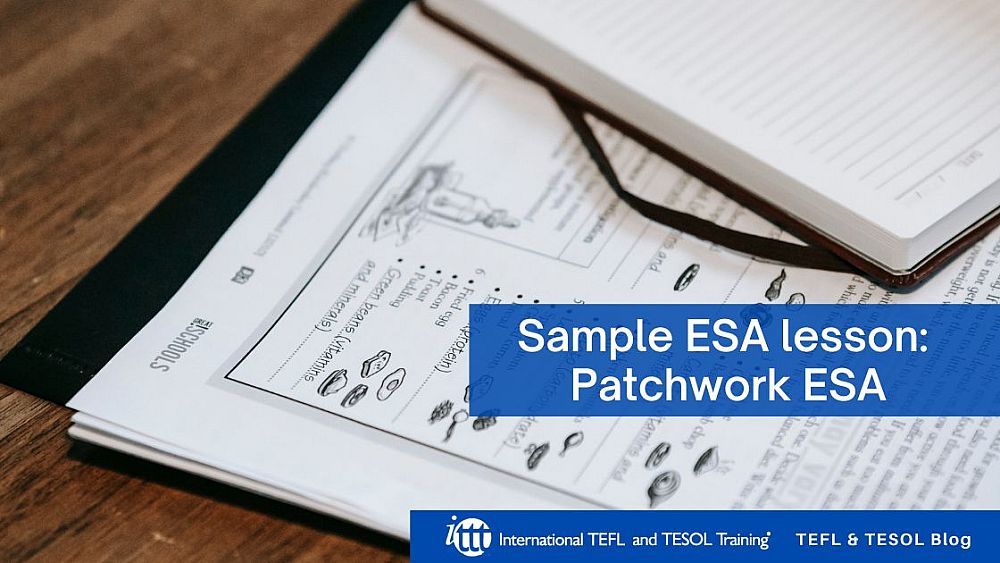Sample ESA lesson: Patchwork ESA

When using the ESA methodology, there are a number of lesson formats available. In the third of this series we look at a Patchwork lesson. What does a Patchwork lesson look like and for what level of student is it most appropriate?
Table of Contents
Watch the video about this topic
Are you ready to teach English as a foreign language?
Check out what our course grads say in our many video testimonials!
Watch the video about this topic
Lesson aim: For the students to be able to discuss holidays using vocabulary and conducting a role-play.Student Level: Intermediate (Due to the complexity of Patchwork lessons they should only be used for Intermediate level and above)
We start by reminding ourselves of the form of a Patchwork ESA lesson.
Engage ïƒ ( A mix of E's S's and A's ) ïƒ ActivateWe start with an engage as always and we will finish with an activate and there will be some combination of E, S and A within the brackets.
Starting with the engage, (E1) the students are going to look at holiday photos and talk about what they like and don't like from what they see. Some useful information in terms of vocabulary and phrases can be boarded. No teaching takes place and no correction is needed.
From there we are going to move directly into an activate phase (A1) and what the students are going to do is to try to act out a role play between a travel agent and a customer. No clues as to the language required are given. As this activity is taking place the teacher will be moving around and looking for gaps in knowledge in terms of their vocabulary and their grammar.
The things we noted are then going to be covered in the first study (S1). So in the board work phase of this study activity the teacher will cover any gaps in knowledge indicated by that first activate activity. This boardwork study phase will be followed by study activities, such as worksheets. The teacher will feedback and correct on those worksheets.
Then the students are then going to do a second activate (A2) and here they're going to use the information from the study activity and they're going to try to create their own travel brochure.
Once the students have created that travel brochure we're going to move into the next phase which is going to be another engage (E2) this time about a slightly different topic.This time the students are going to be asked what they like about particular radio or TV adverts and we will get the students to tell us which particular advertisements they like and why, also we can ask which ones they find amusing. Useful information in terms of vocabulary and phrases can be boarded. No teaching takes place and no correction is needed.
From this we will move into another study phase (S2) where the teacher is going to cover the types of language that is generated by those types of adverts. This boardwork study phase will be followed by study activities, such as worksheets. The teacher will feedback and correct on those worksheets.
To finish the lesson off the students will complete a final activate activity (A3) where hopefully we are going to bring everything that has been covered so far in the lesson together. The students should create their own TV advert and they will then present it to the rest of the class.
Are you ready to teach English as a foreign language?
Apply now & get certified to teach english abroad!
Speak with an ITTT advisor today to put together your personal plan for teaching English abroad!
Send us an email or call us toll-free at 1-800-490-0531 to speak with an ITTT advisor today.
Related Articles:
- Top 10 Cities in Europe with the Highest Demand for English Language Teachers
- 5 Reasons To Take A TEFL Course Right Now - Even If You Are Not Leaving Yet | ITTT | TEFL Blog
- All the Documents You Will Need to Teach English Abroad
- The Impact of Positive Motivation on an ESL Classroom
- You're Never Too Old to Change Your Life and Do a TEFL Course | ITTT | TEFL Blog
- Getting Student Placement Right - The Best Desk Arrangements for EFL Students



